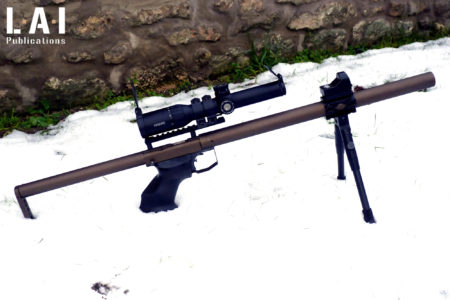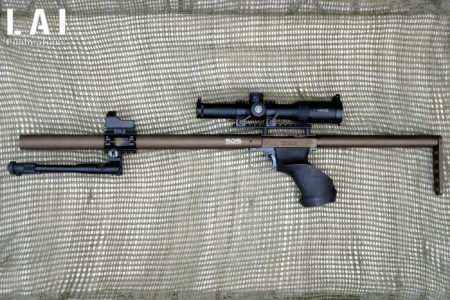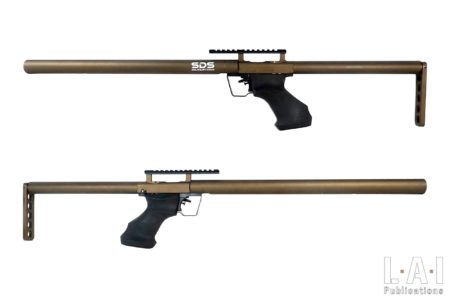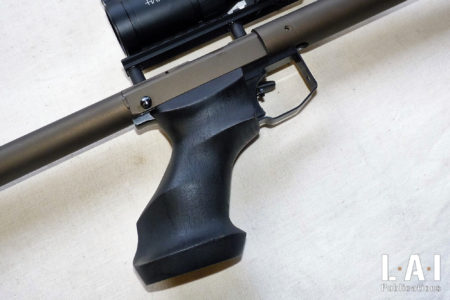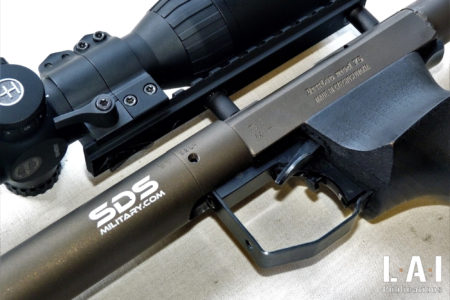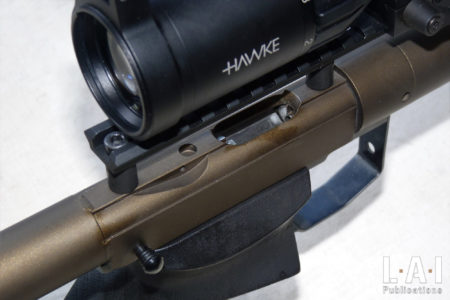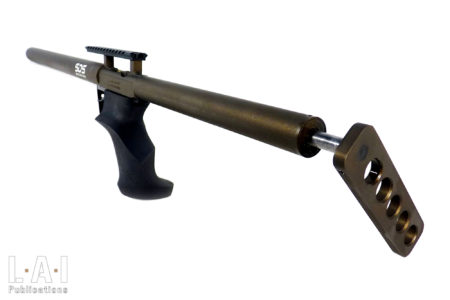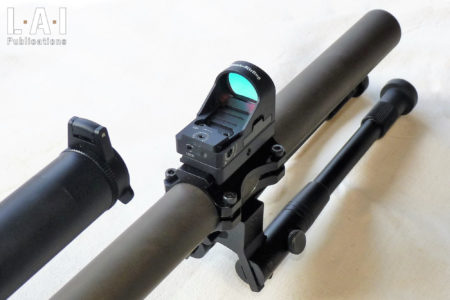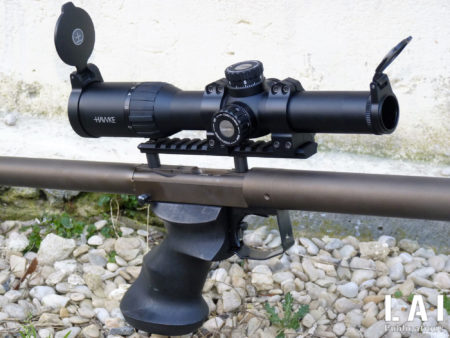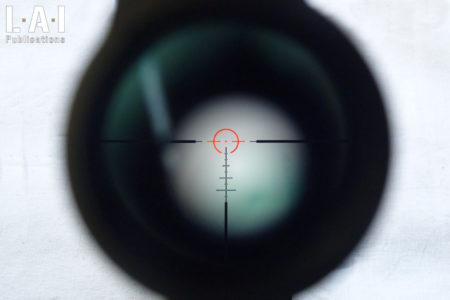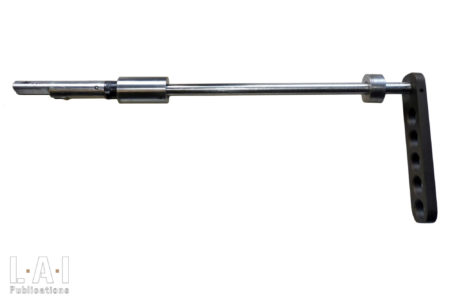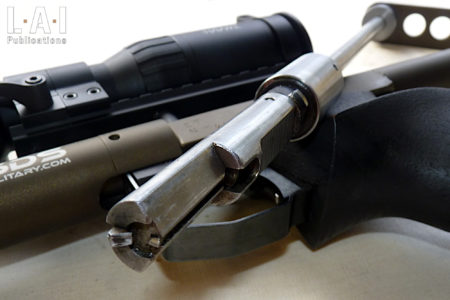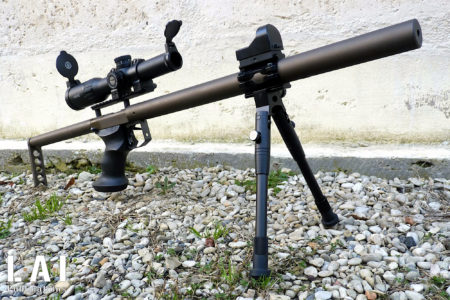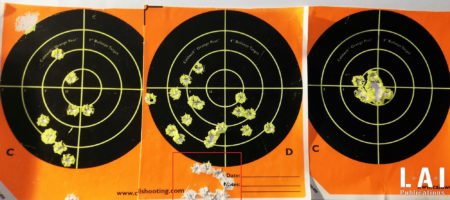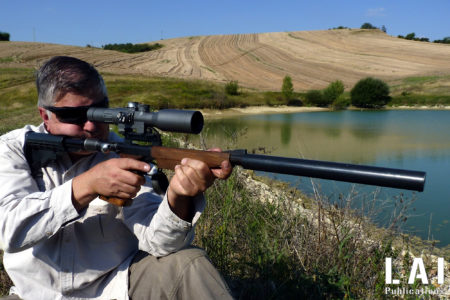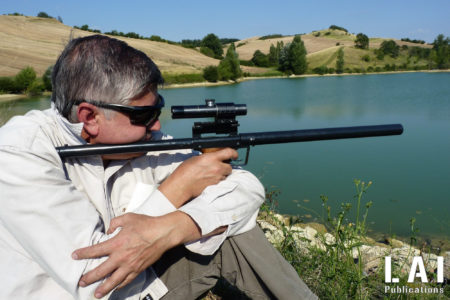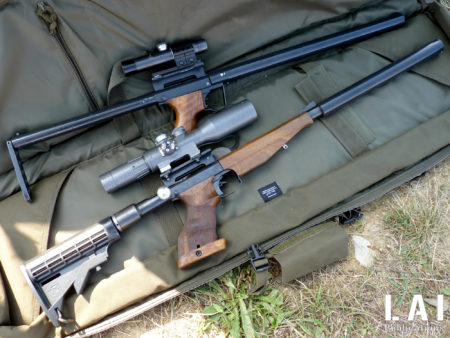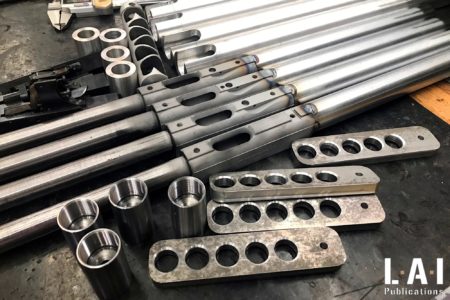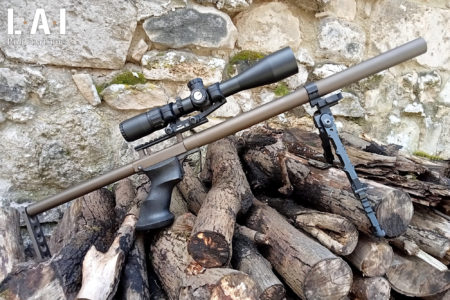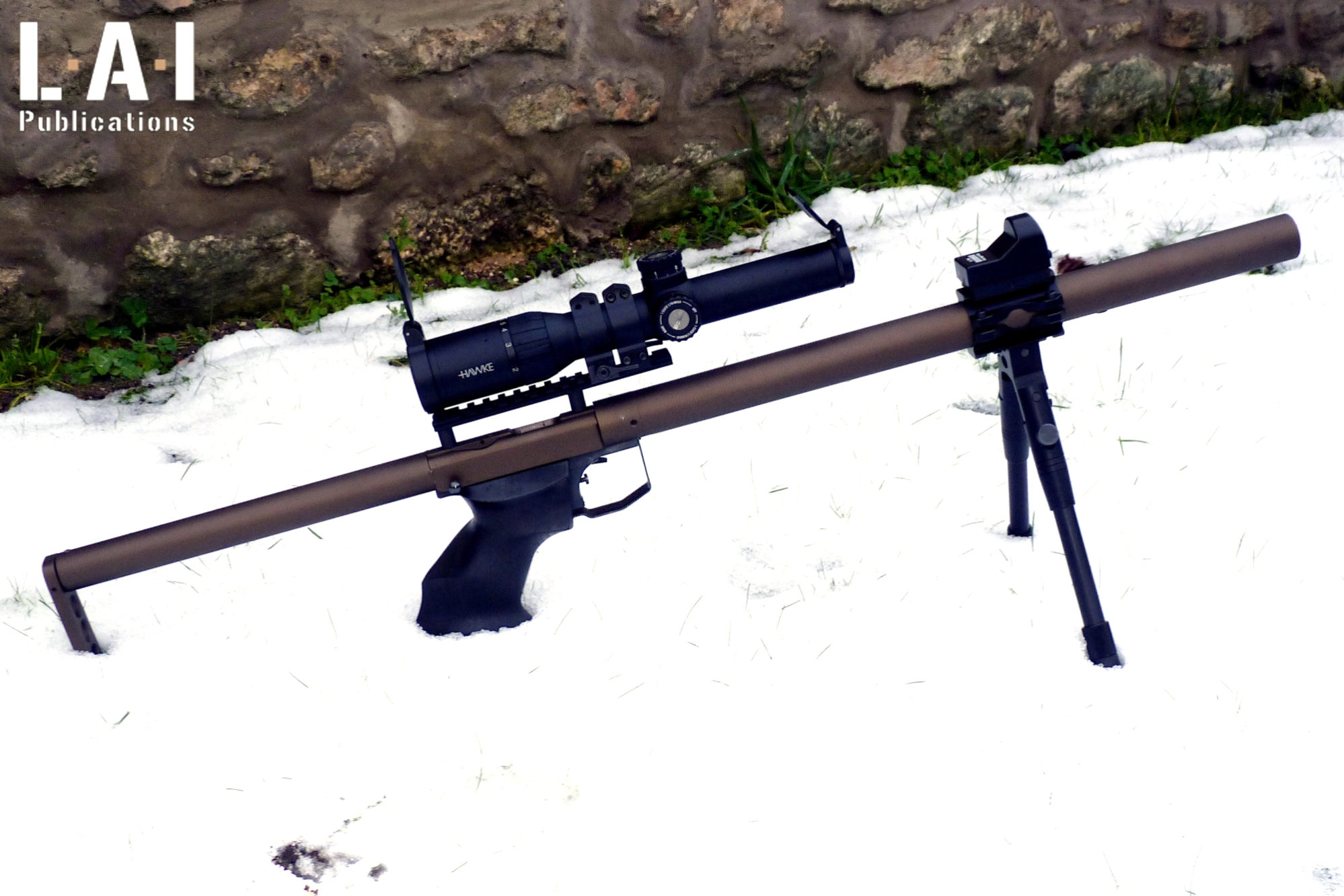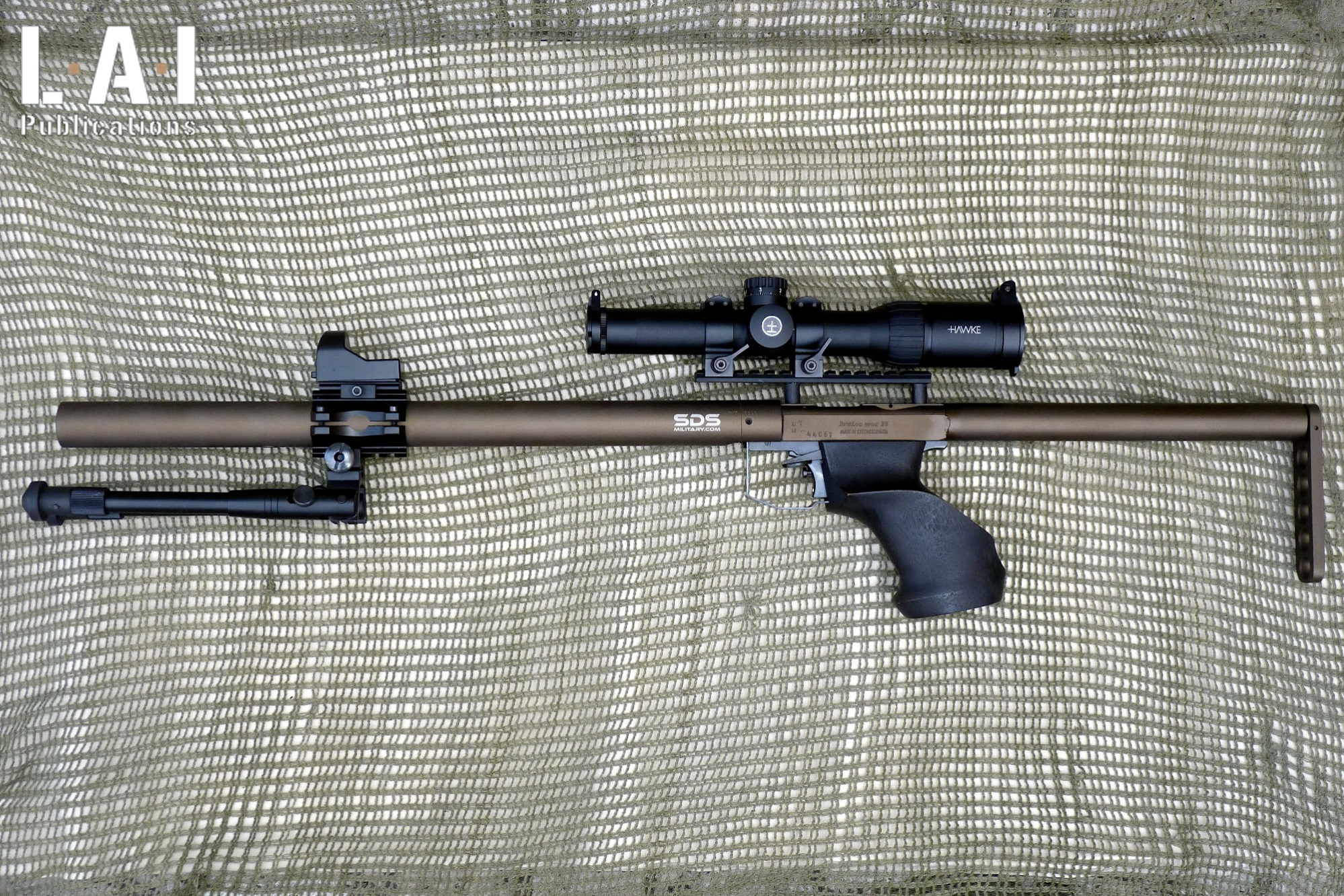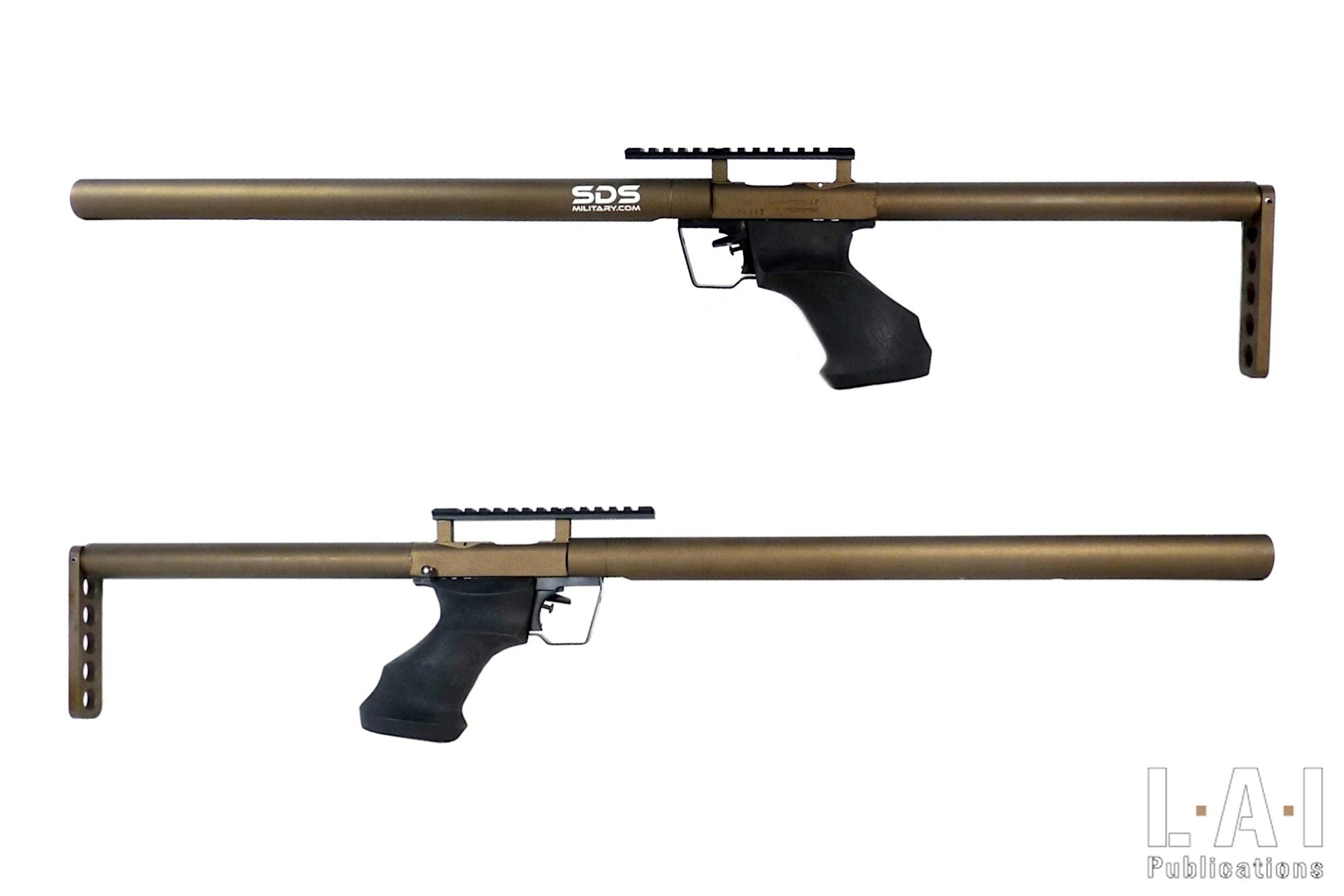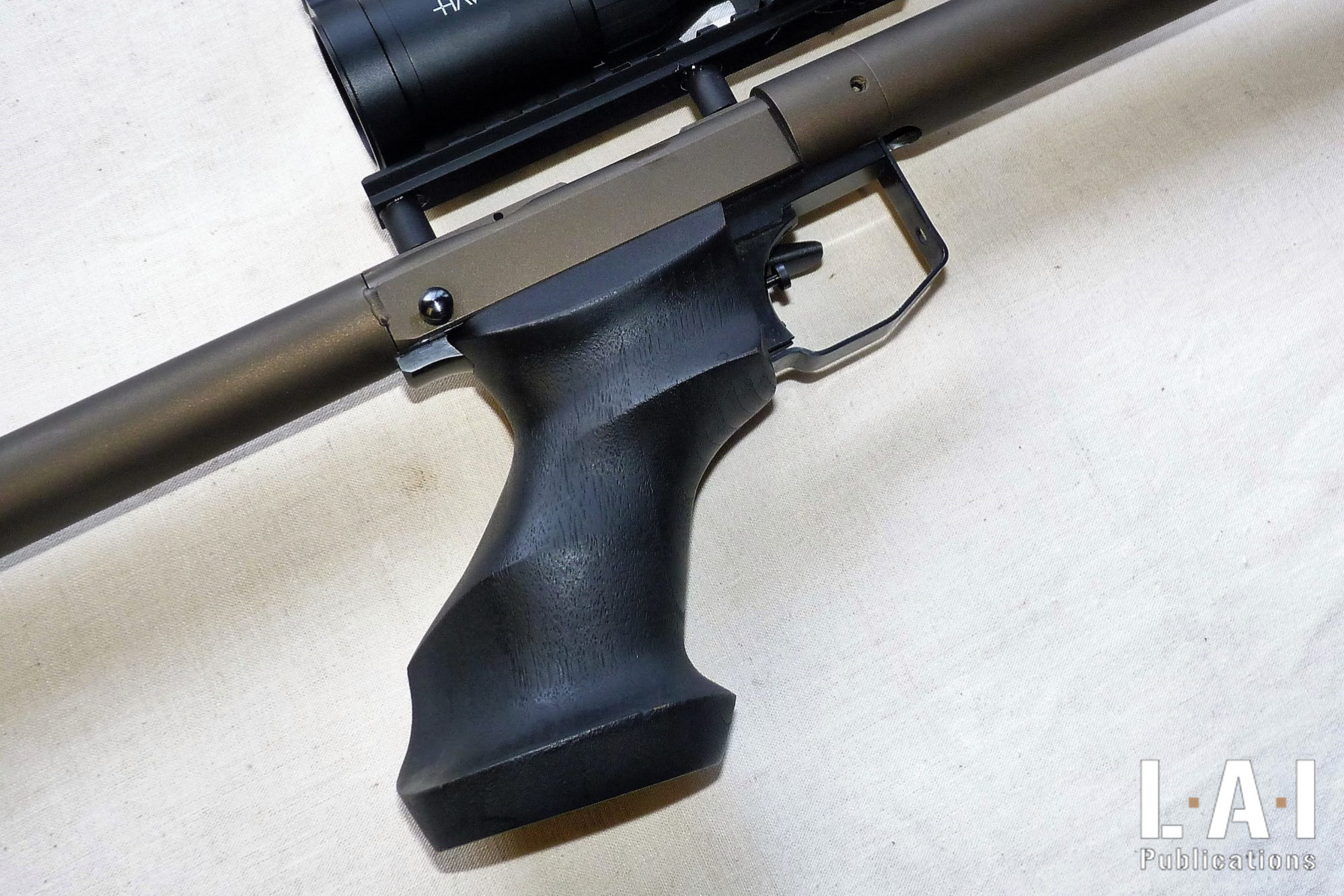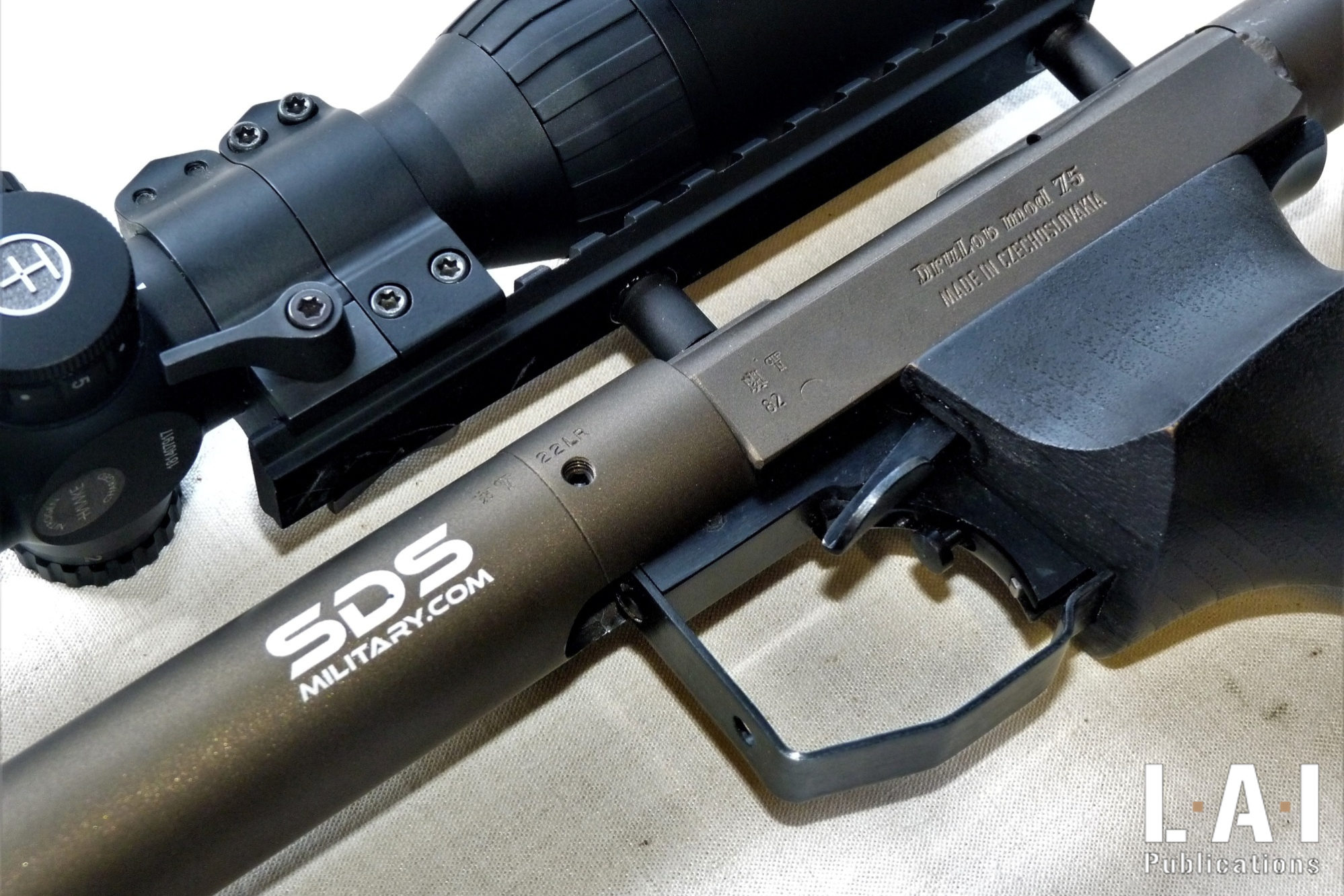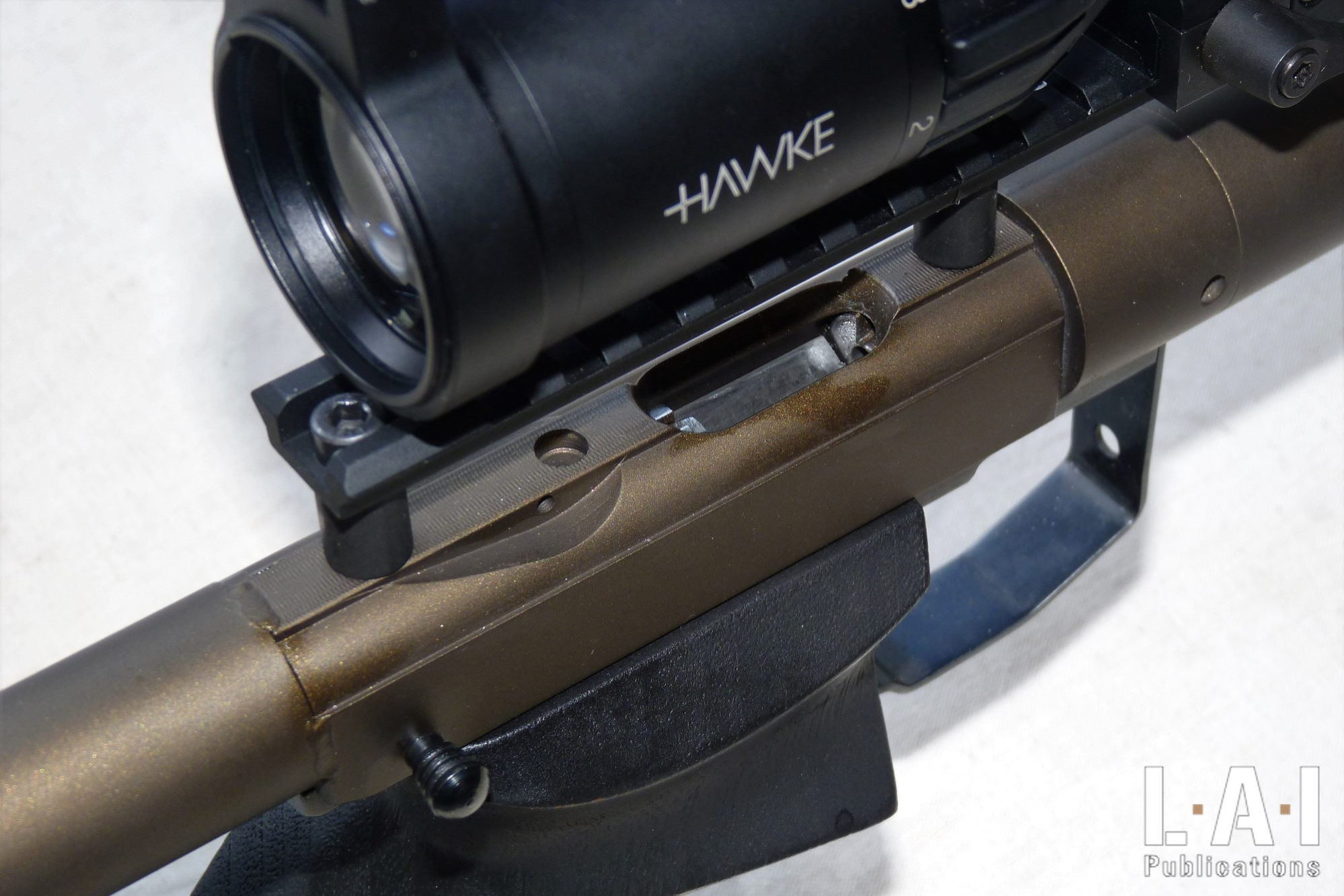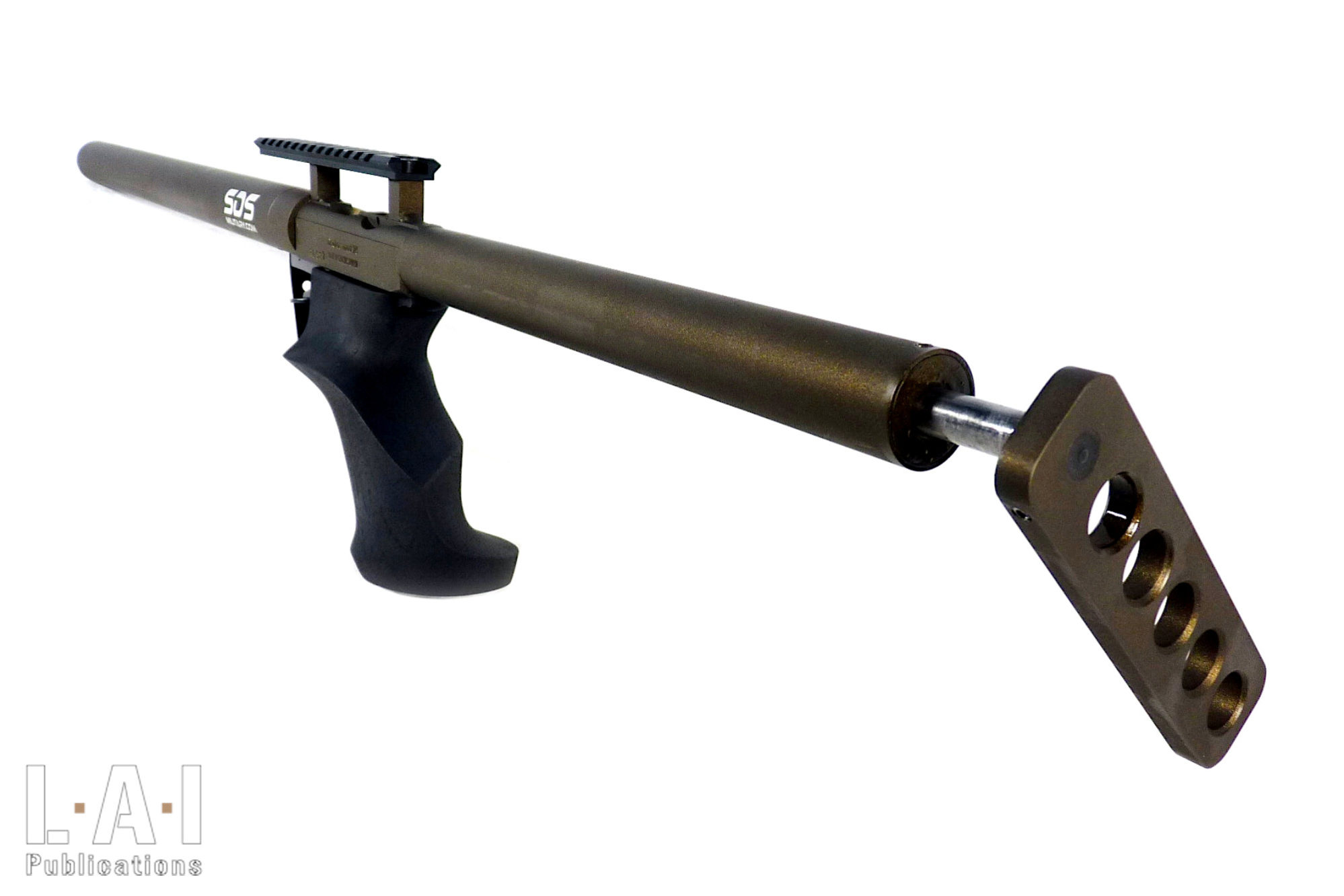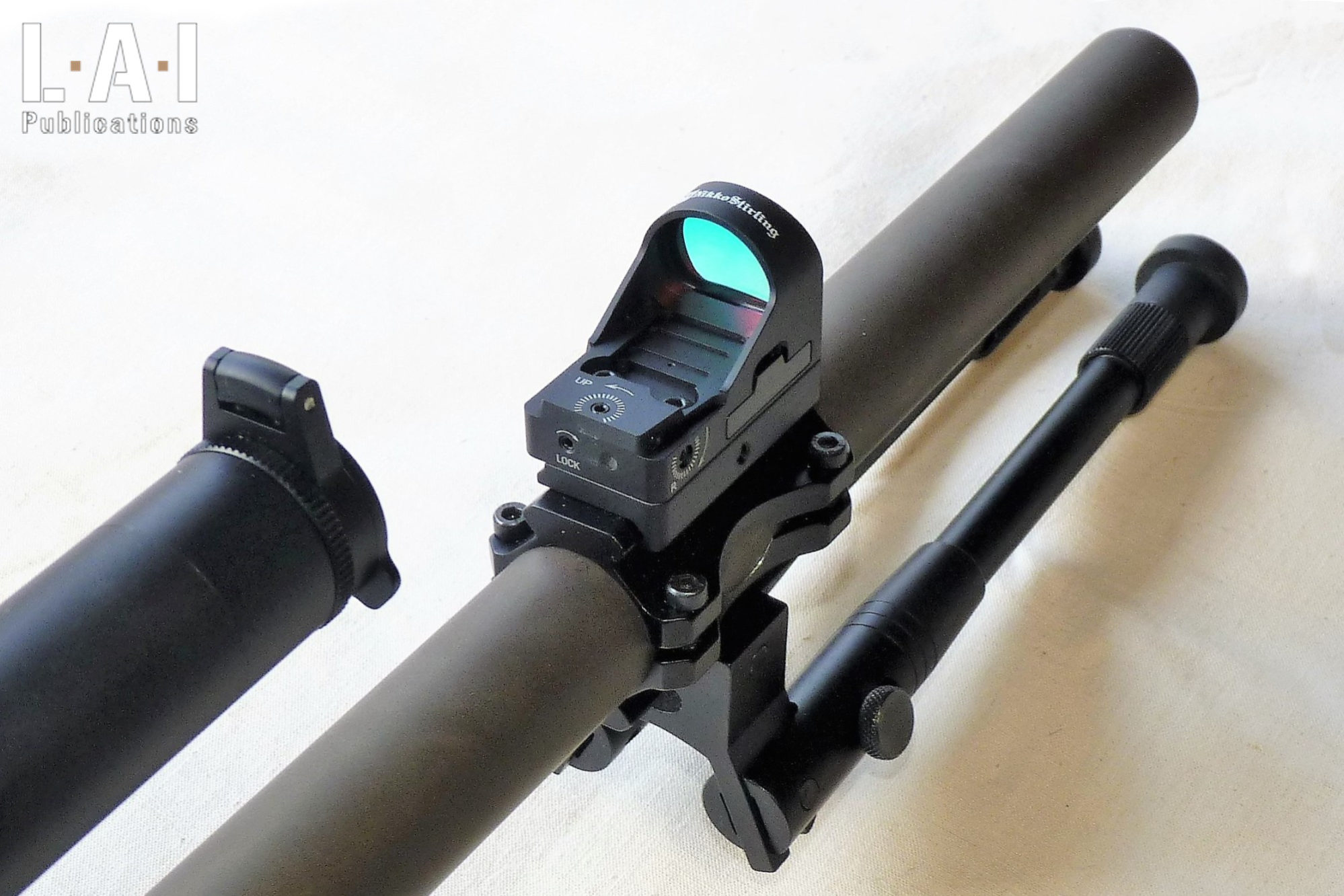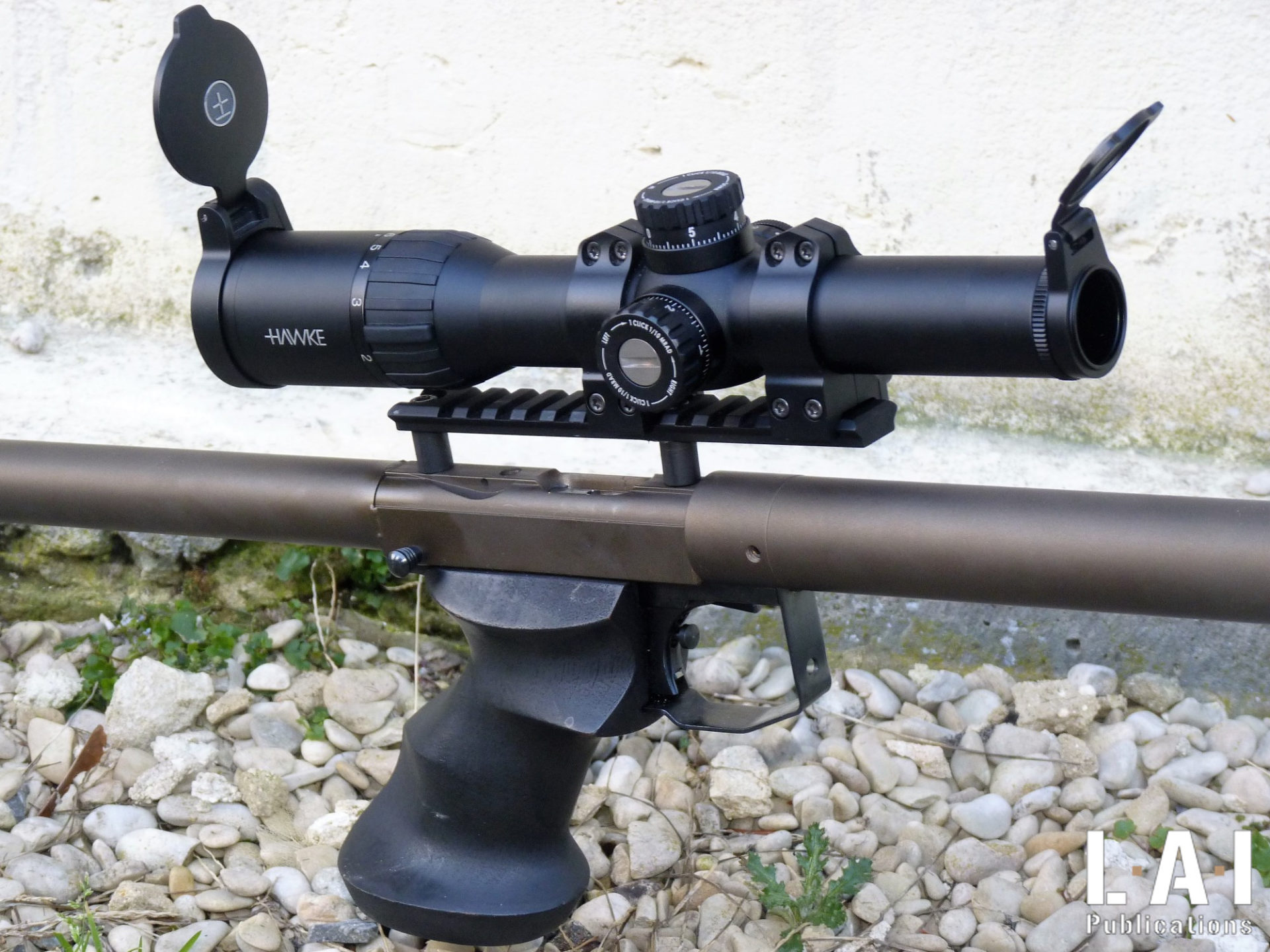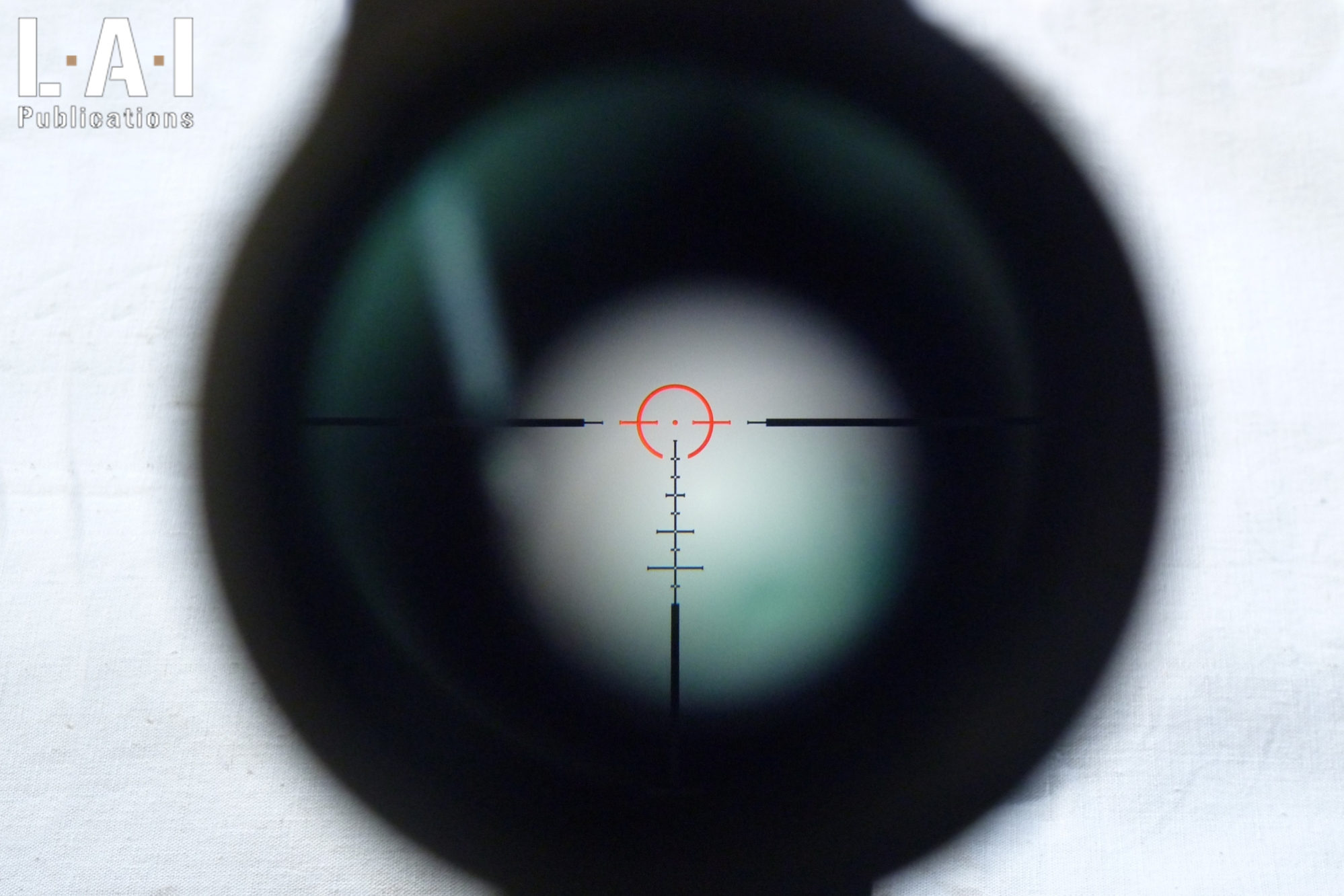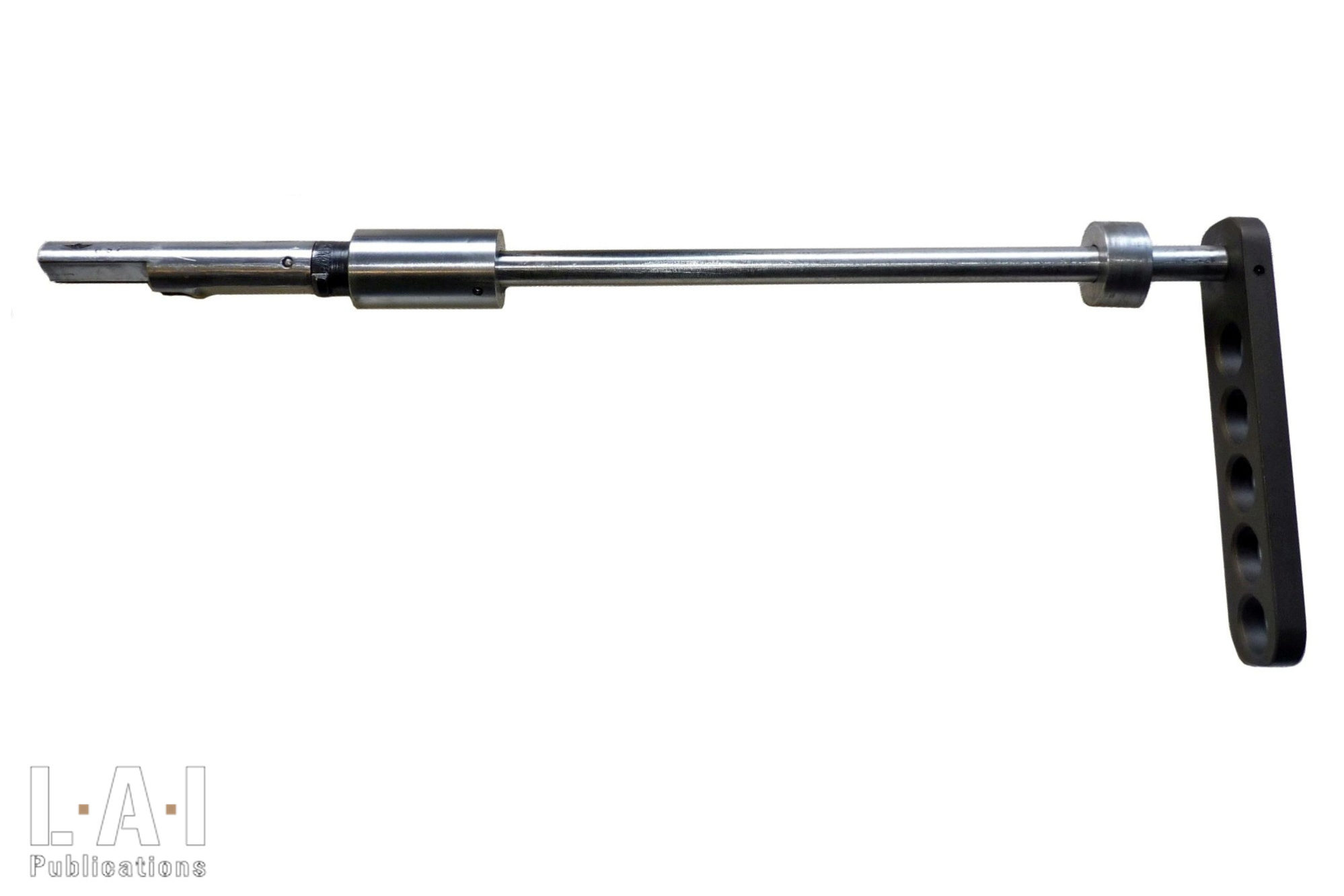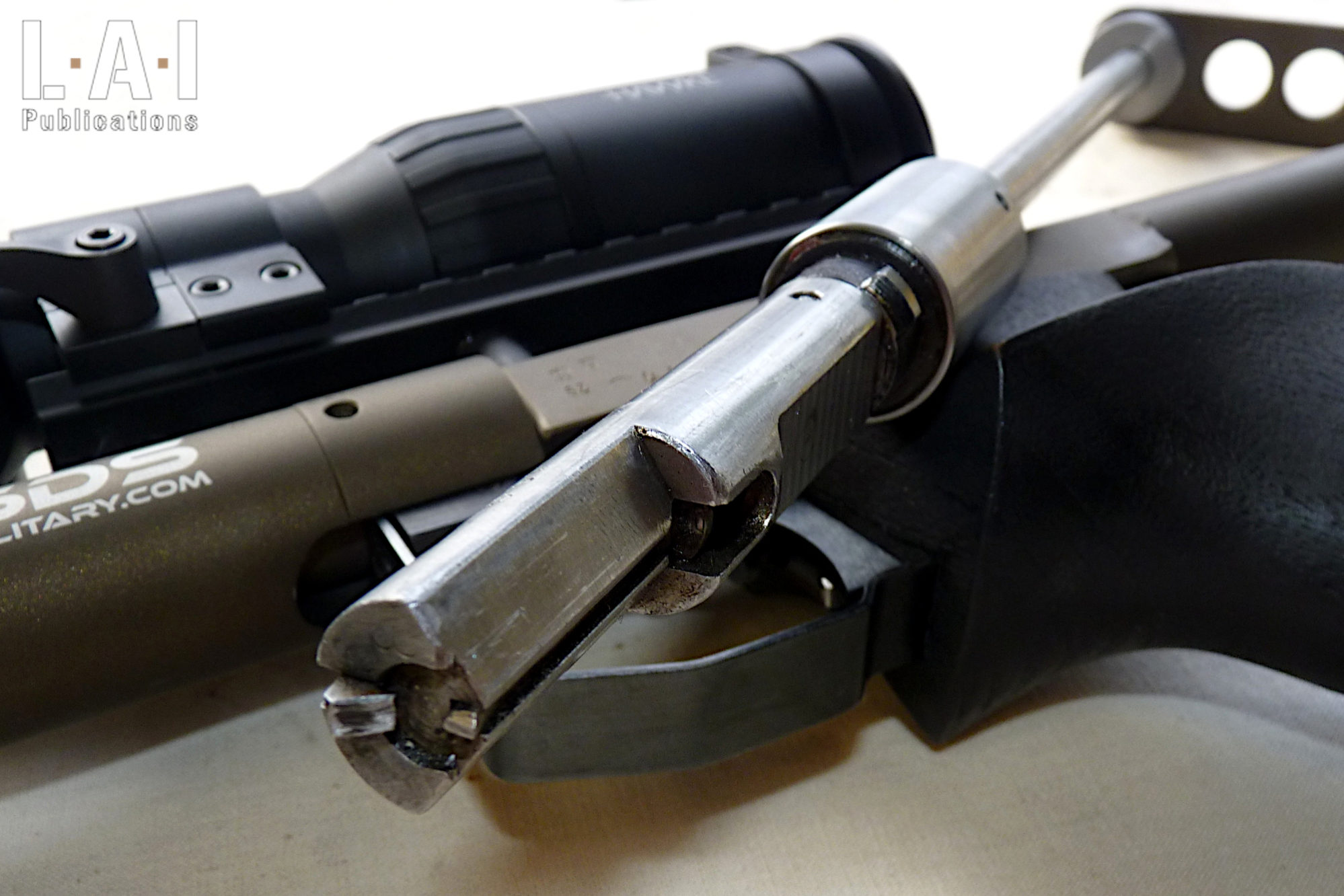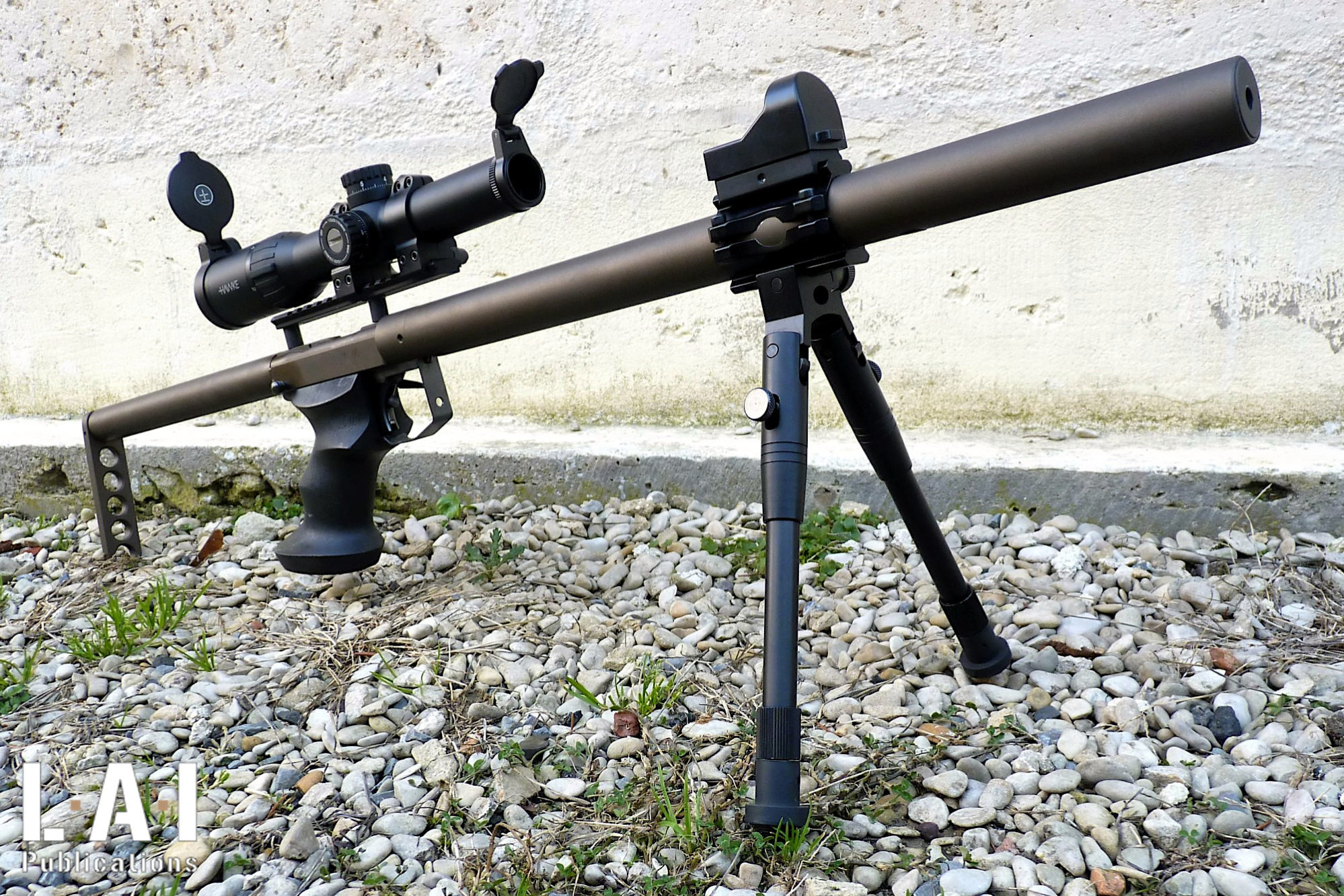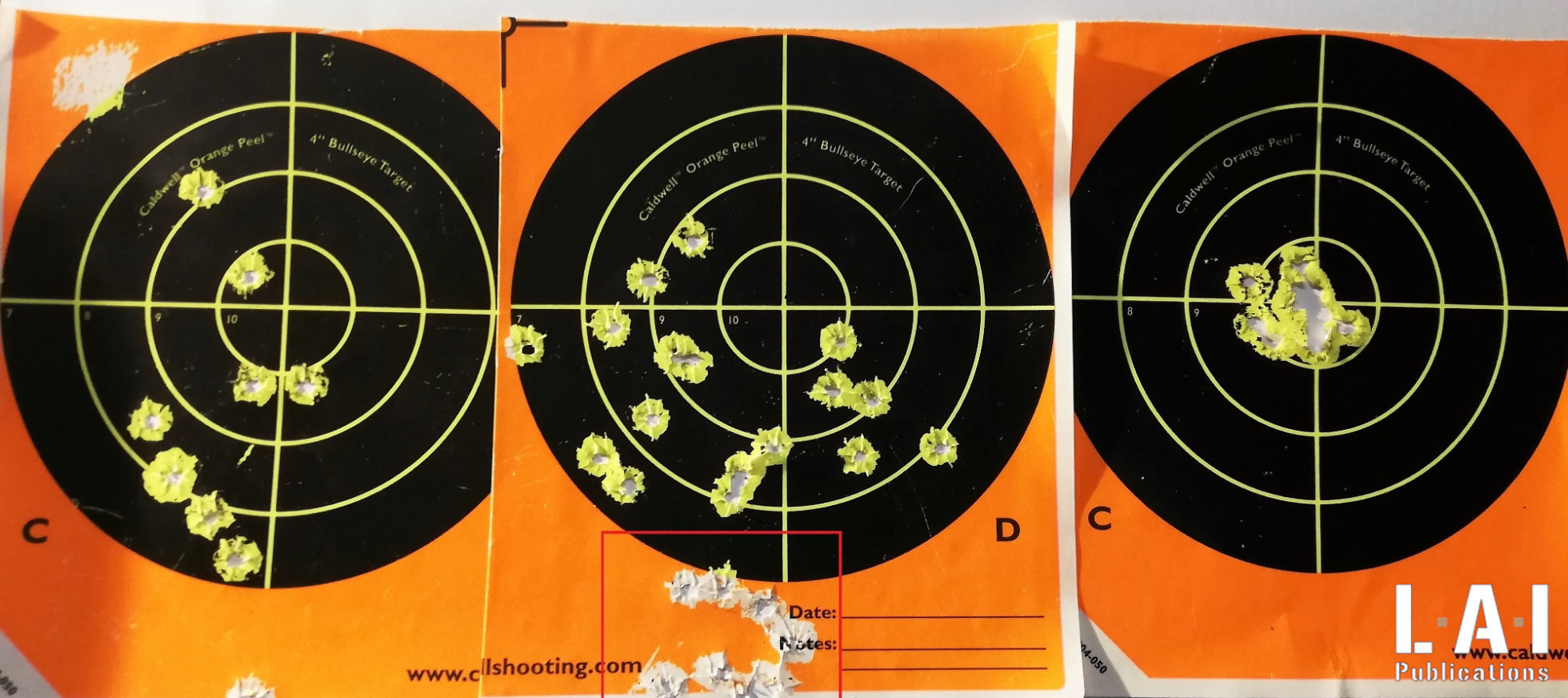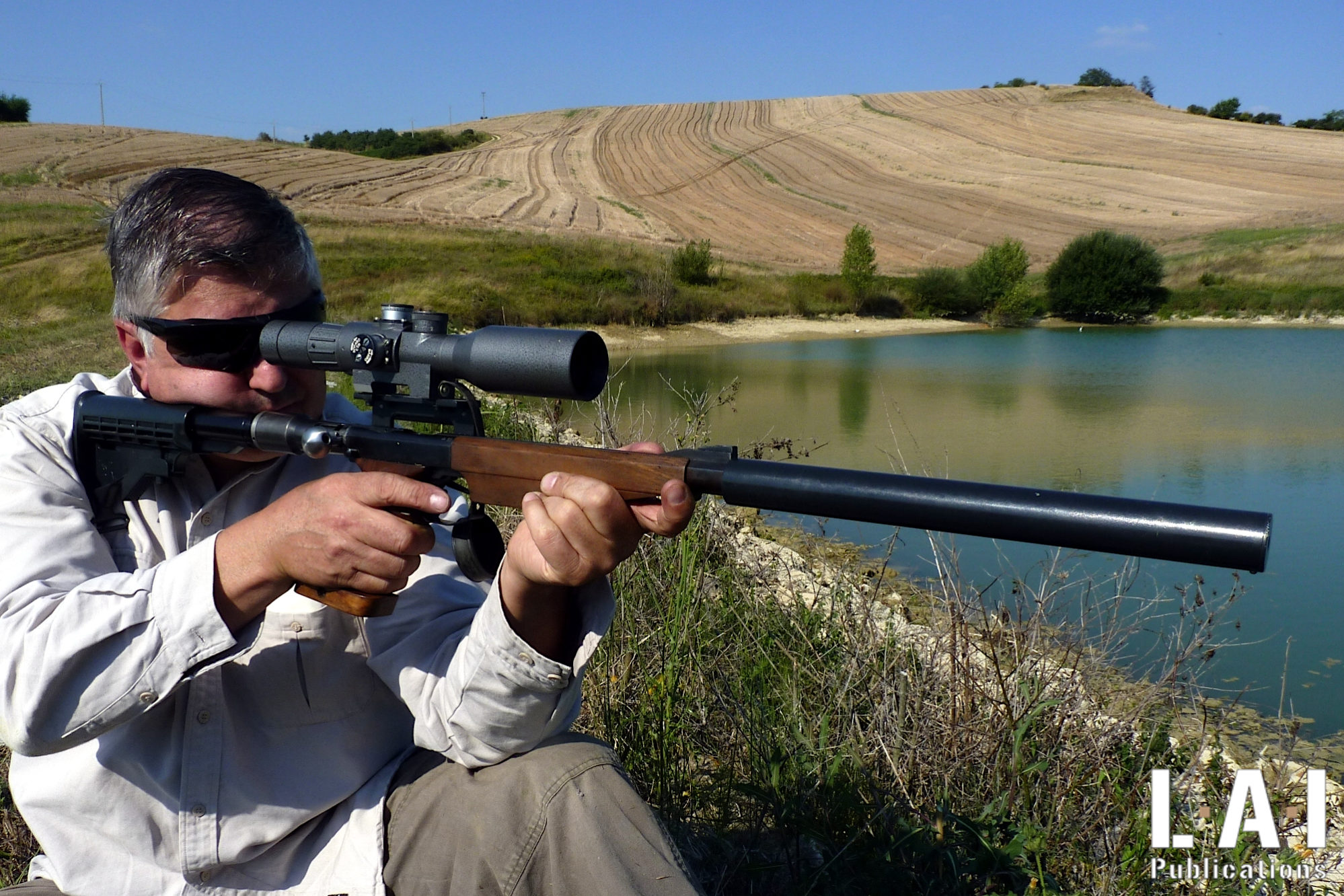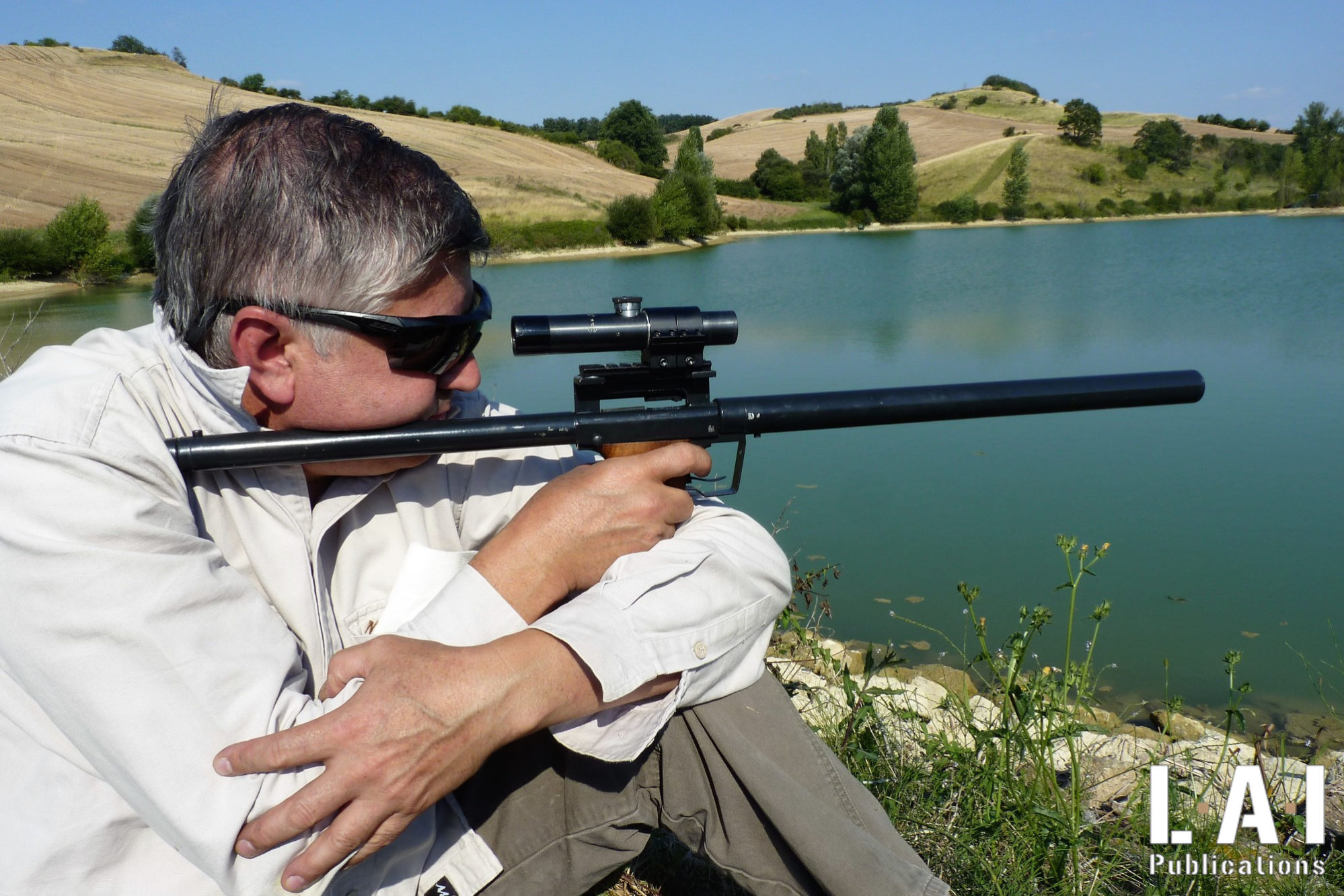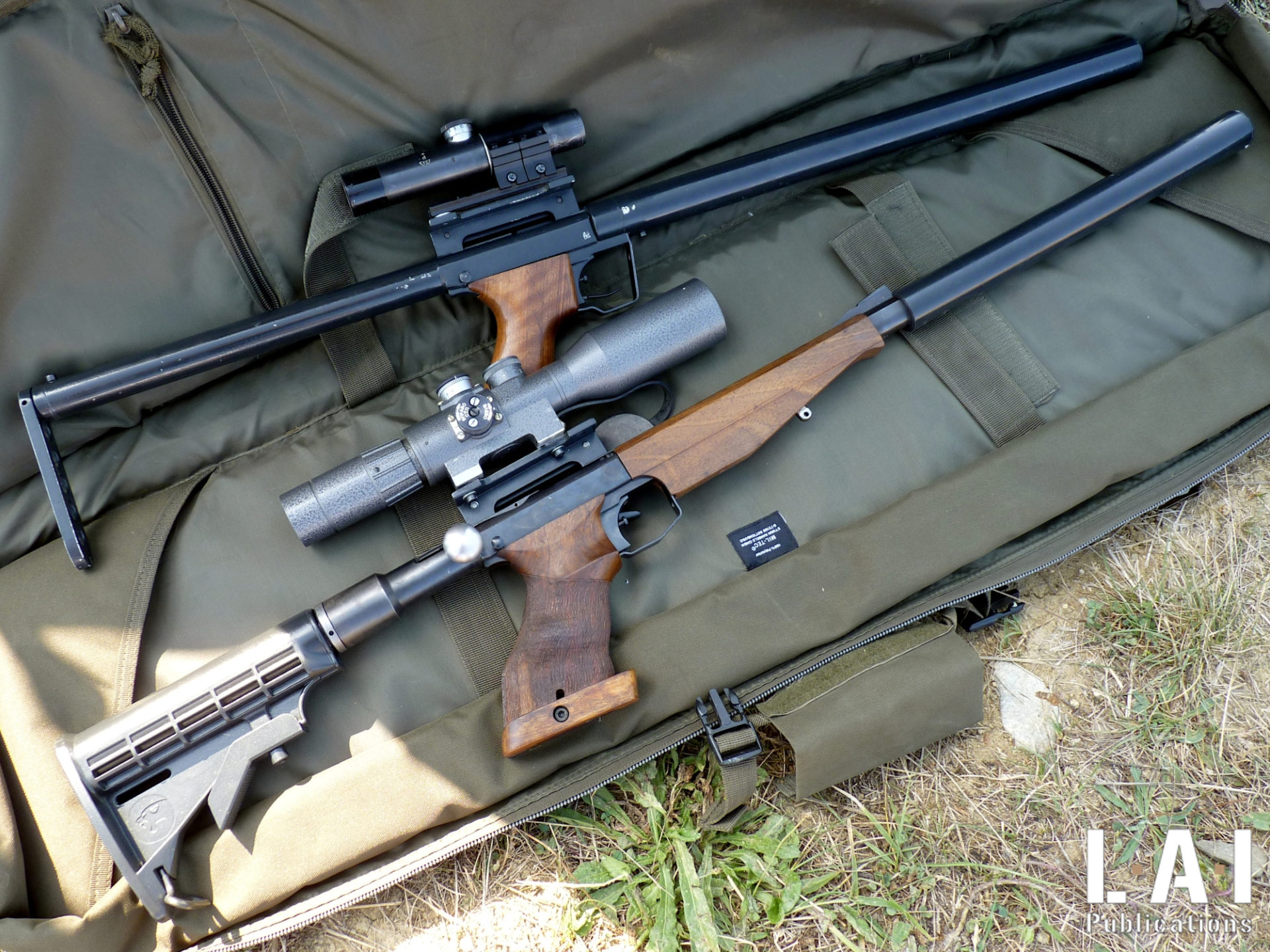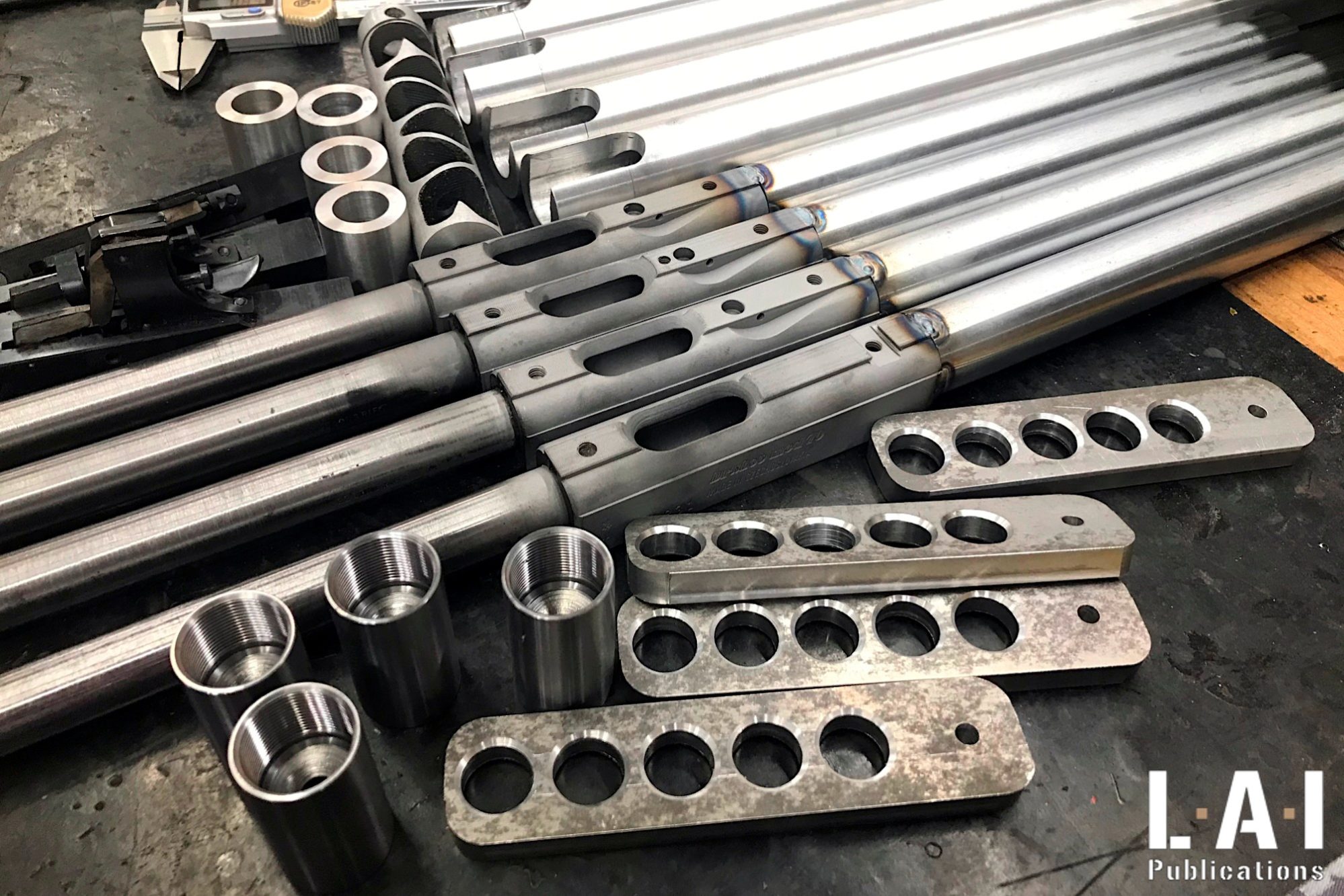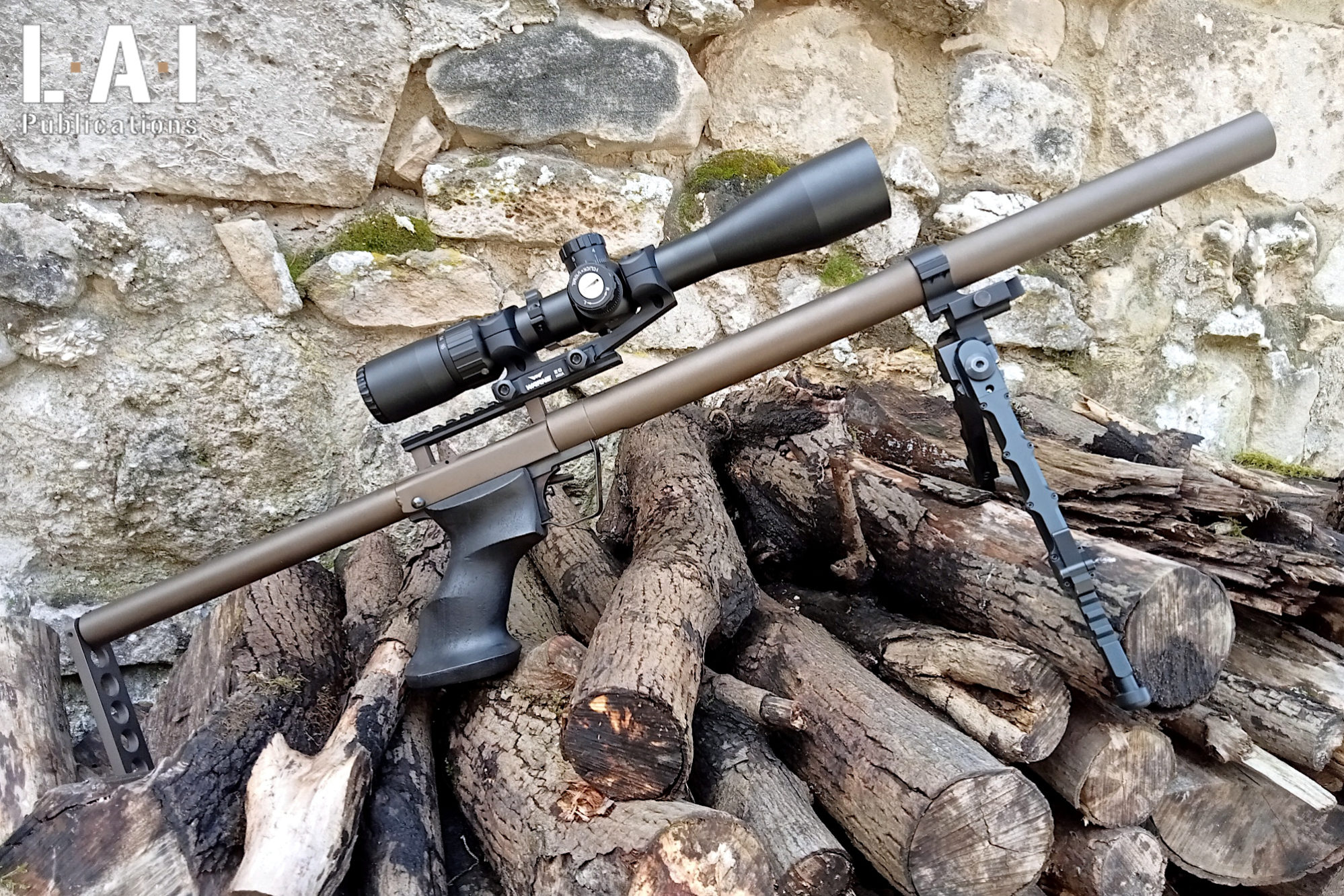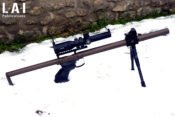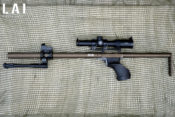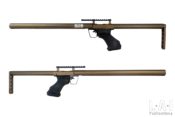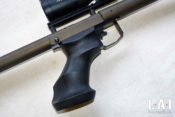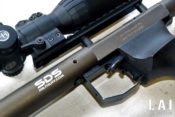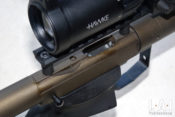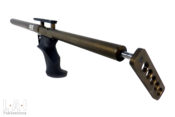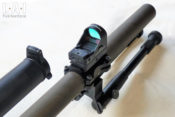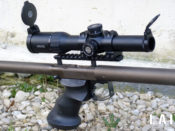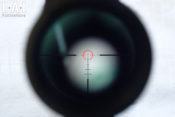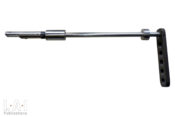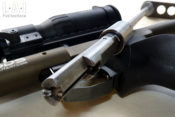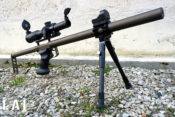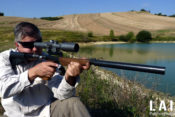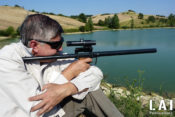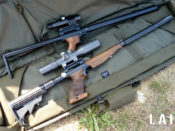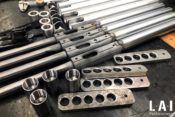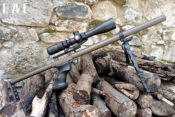The Drulov based SDS Custom Carbine in .22 LR

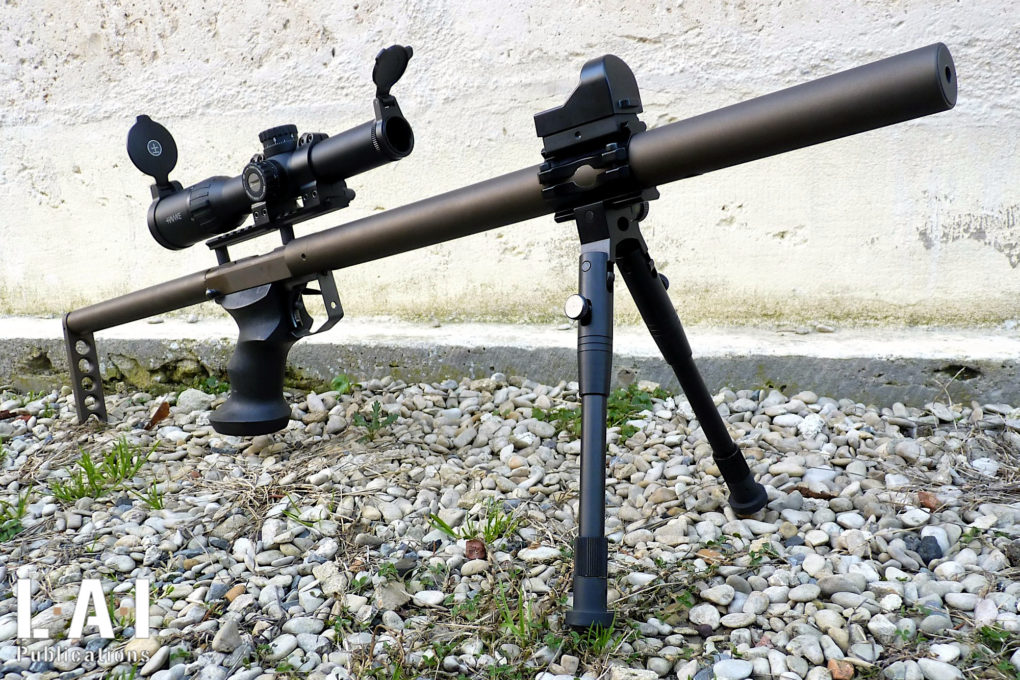
Once again, let’s present here a creation from SDS Gun shop: a conversion of the Drulov single-shot pistol into a carbine with integrated silencer. Our first encounter with this weapon dates to the early 2010s during a shooting session. Jean Paul Sape, founder of SDS Gun shop had then unveiled two Drulov 75 pistols modified into silent single-shot carbines. This was followed by a long afternoon of shooting at distances of 100 to 200 m on clays. The weapons were “raw”, in the prototype state, but we were surprised by the accuracy and charmed by the originality of the concept.
Nothing is lost, nothing is created…
Yes, my brave friends, in France we do not have oil, but ideas. The apocryphal quote attributed to Antoine Lavoisier is perfectly illustrated here “Nothing is lost, nothing is created, everything is transformed”! Since these first tests, the concept has evolved as the tests went on, SDS Gun shop offers – when the supply of “raw material” allows – a final version of this rifle. Accessible to hunter and shooter in the French legislation, the weapon is particularly unusual and original, but also extremely accurate. It is directly based on a family of Czech .22 LR single-shot pistols Drulov. These weapons put on the market in the early 70s and over the counter in France until the end of the 1990s have made the happiness of many shooters. Extremely cheap, the most elaborate models offered excellent accuracy up to 50 m. They were used in particular in the disciplines of the free pistol and the metallic silhouette. At the end of the 1990s, the evolution of legislation, subjecting them to special authorization, sealed their fate. If previous owners were able to keep their weapons “out of quota” (there is a 12 weapons quota on the kind of weapon), this change of category made them almost impossible to sell. They were thus condemned to sit on the shelves of many armories or simply to be destroyed. Thus the “raw material” of these rifles is in principle available, it only remained to start the project.
According to the gunsmith’s design, the weapon is minimalist and refined: it is both elegant and intriguing for an amateur. The general line is tubular, only the handle in the central position breaks the silhouette. The Drulov 75 is single-shot, so no need of a magazine… With 82 cm, this custom is extremely compact, while ensuring the minimum length for classification as a hunting and shooting weapon. The steel receiver is in the central position. Rectangular in shape, it brings together all the elements of the weapon. The feed/eject port is in the top position. The weapon does not have a safety lever, the only control present at the right rear of the case is the axis of disassembly of the bolt. The latter is a cylindrical piece with a mobile lock with two lugs positioned at the back. We also find the basics: a striker, its spring and an extractor. It is on the mobile lock of this bolt that a rod, connected to the buttplate, is fixed. The handling of the bolt is thus carried out via the buttplate and not by the bolt nut on the back of the receiver as on the pistol.
A silent concept
As on the original weapon, the barrel is screwed into the receiver. With a length of 25 cm, it allows an interesting exploitation of the ammunition well beyond 25 m, hence its excellent reputation for accuracy at 50 m. This barrel is no longer visible, since the 30 mm diameter silencer of a 46 cm length covers it. The elements of this silencer were designed by SDS: they are a set of trapezoidal cells machined in an aluminum bar (visible on picture 18). The assembly thus formed is no longer removable, hence guaranteeing the length of the weapon and therefore its administrative classification. For the French shooter, it can be noted that the weapon has an RGA number classifying it in the C category, precious and essential sesame for marketing since January 2021.
The trigger mechanism is a model of its kind for a match weapon, allowing direct releases and being adjustable to an extremely light releasing weight. Small curiosity of the Drulov 75, there is not strictly speaking a “trigger tail”, but a button that could be likened to a screw head. Disruptive at first, but really performing. The system is not cocked by the movement and locking of the bolt, but by a side lever arranged to the left of the bridge, which is similar to a “Stecher” with separate armament as on some hunting weapons. In practice, this system makes it possible to transport the weapon safely by dissociating the loading from the cocking, which is a positive point, even on a shooting range. The device therefore makes it possible to overcome the absence of a traditional safety. Naturally, firing is impossible if the bolt is not fully locked.
The grip is made of wood, fixed by a through screw to the receiver. A black paint covers it and reinforces the sobriety of the weapon. Depending on the type of Drulov modified, there may be differences in the handles, for example its angle or by the presence of adjustable anatomical elements. Our Drulov 75 has a grip whose angle did not give it a comfortable grip for a handgun (unlike the Drulov 90), in carbine version it is not a problem, and the shooter naturally takes an adequate grip.
For the most cinephile among you, the SDS Drulov 75 carbine will recall the minimalist rifle used in the movie ” The day of the Jackal “. We are not talking here about the outrageous Hollywood blockbuster with Bruce Willis, but about the film from which it is inspired. This Franco-British masterpiece released in 1973 recounts the hunt for a professional killer acting on behalf of the OAS and having to eliminate the General de Gaulle, nothing less! Edward Fox is tracked by Commissioner Lebel played by the excellent Michael Lonsdale, the killer using a minimalist and takedown carbine, hidden in an orthopedic crutch and firing 8.15×46 R ammunition… with explosive rounds moreover! In the SDS custom, we find a little of this DNA …
An atypical implementation
The stock therefore consists of a tube housing a steel rod directly connected to the bolt assembly, a steel buttplate equipping it at its end. The buttplate makes it possible to unlock the bolt by a counterclockwise rotation of one sixth of a turn (and vice versa for locking). This rod is inserted into a tube directly connected to the receiver.
Having intended the weapon to be equipped with an optical (or optronic) sight, the weapon no longer has iron sights. The upper part of the receiver was milled and threaded, a Picatinny rail put in place. It is therefore possible to quickly and easily install almost all optical assemblies on the market. Note that the body of the silencer, of a 30 mm diameter allows the use of any scope mount of the market to install optional accessories. Here, a mount with two Picatinny rails allows to install the bipod but also a second sight: a red dot in “backup sight”.
The entire weapon receives a Cerakote “Midnight Bronze” finish of the most beautiful effect. While being discreet, the shade of the weapon clearly highlights the fluid line of the whole with extraordinary looks!
For our tests, we installed a compact Hawke Frontier scope with a diameter of 30 mm and a magnification of 1-6×24. The reticle makes it easy to compensate for the bullet drop depending on the type of ammunition used (standard or subsonic), as well as the firing distances. The reticle is illuminated for use in low light conditions. A red dot of the “Docter Optics” type is therefore installed as a “backup sight” at the front.
Successful trials
We had the opportunity to test this rifle over a long period of time and put it in the hands of several shooters. The firing distances ranged from 25 to 100 m, shooting with and without rest.
The ammunition used was the excellent RWS “Pistol Match” and “Rifle Match”, the Subsonic HP, as well as the CCI Subsonic. Operation and loading are simple, although quite unusual. The offhand, in the absence of handguard, holds the silencer’s tube at the front of the receiver while the other hand passes from the grip to the buttplate to open the bolt. Loading is convenient, just drop the cartridge in the receiver and lock the bolt. The extraction is reliable, the ejection requires an action a little franker when opening, but by tilting the weapon laterally the empty case falls to the ground. In short, habits to take. Once cocked, the “trigger” (in short, the button …) provides a direct, clean and extremely light release, really beneficial to accuracy while requiring a certain habituation for novices of this type of trigger mechanism.
When first handling the weapon, the adjustment shots were made at 25 m, on a pistol shooting range. Without a rest, the groups remain at the 10 of the 50 Pistol target, the distance is short but allows to find its bearings and habits with a carbine as short and light (barely 1950 g). The shots at 50 m were carried out mainly on reactive targets, standing or sitting, the fall of the bullet evaluated, and the corrections made to the setting allow once again very satisfactory results, but the original pistol already having this reputation, it is at 100 m that we would proceed to most of our shots from a rest. The groupings with subsonic ammunition remained grouped in a square of 10×10 cm, which given the length of the barrel and the moderate magnification of the scope are very satisfactory results. The RWS Pistol Match ammunition granted us a group of 5×5 cm at the same distance, what more could you ask for a 25 cm barrel…
It is also questionable what barrel length allows optimal exploitation of a “standard” .22 LR ammunition. For its part, SDS Gun shop, in order to make its own idea for its work, carried out tests: without any real surprises, it seems that 50 cm is an excellent choice. But for the use that is made here (with integrated silencer in a compact weapon), the choice to keep the original barrel of 25 cm, is more than rational, both from an economic and practical point of view. This barrel is also particularly renowned for its precision… Why change a winning team?
Over time, our rifle evolved: the “backup” red dot – actually useless – disappeared in favor of a lighter and simpler bipod mount and the Hawk scope to give way to a Shepherd 4-16×44 FFP scope installed on a Warne Cantilever 20 MOA mount in order to take the SDS Drulov 75 carbine to 200 and 250 m. And the result is convincing: our best groupings are less than 15 cm in diameter at 250 m… Enough to make a beautiful gong shooting session!
The strong point, apart from the looks and precision, remains the discretion of the shots. In subsonic, it produces a sound close to that of a small air rifle, without the “dry” snap. With standard ammunition such as the Rifle Match, the weapon produces an extremely reduced noise allowing shooting without hearing protection, or even without any discomfort for the neighborhood. This is what adds even more fun to shooting sessions where all shooters are silent. Shooting gongs or metal silhouettes rewards the precise shooter with a tinkling indicating the shot has hit!
Regarding maintenance, as mentioned, the silencer is not removable to guarantee the administrative classification of the weapon (like the majority of .22 LR rifles with integrated silencer). Thus, the maintenance of this weapon will be reduced to the receiver, bolt and barrel. After ensuring that no ammunition is present in the weapon, remove the captive disassembly pin at the back of the case and move the assembly back via the layer plate. On the back of the butt tube, using a hex-key, remove the screw completely to release the captive guiding ring from the stock tube. Additional traction allows the bolt to be taken out. Undeniable advantage of these simple mechanics, cleaning is easy. Good lubrication will be applied before reverse reassembly.
In conclusion
This colorful custom is a real pleasure to shoot with. Original and with a particularly neat look, it allows both playful shooting and the search for precision. Short and well balanced, this weapon will satisfy all sizes, even the youngest shooters. The weapon presented comes from a small series produced by reservation. Once the process is established, new rifles can be made to order, ideally when the Drulov to be processed is supplied. The budget is all in all reasonable in view of the workshop and administrative work, of the order of 550 € including the passage to the Proof House of Saint-Étienne.
Julien Lucot
This is free access work: the only way to support us is to share this content and subscribe. In addition to a full access to our production, subscription is a wonderful way to support our approach, from enthusiasts to enthusiasts!
SDS Gun Shop:


